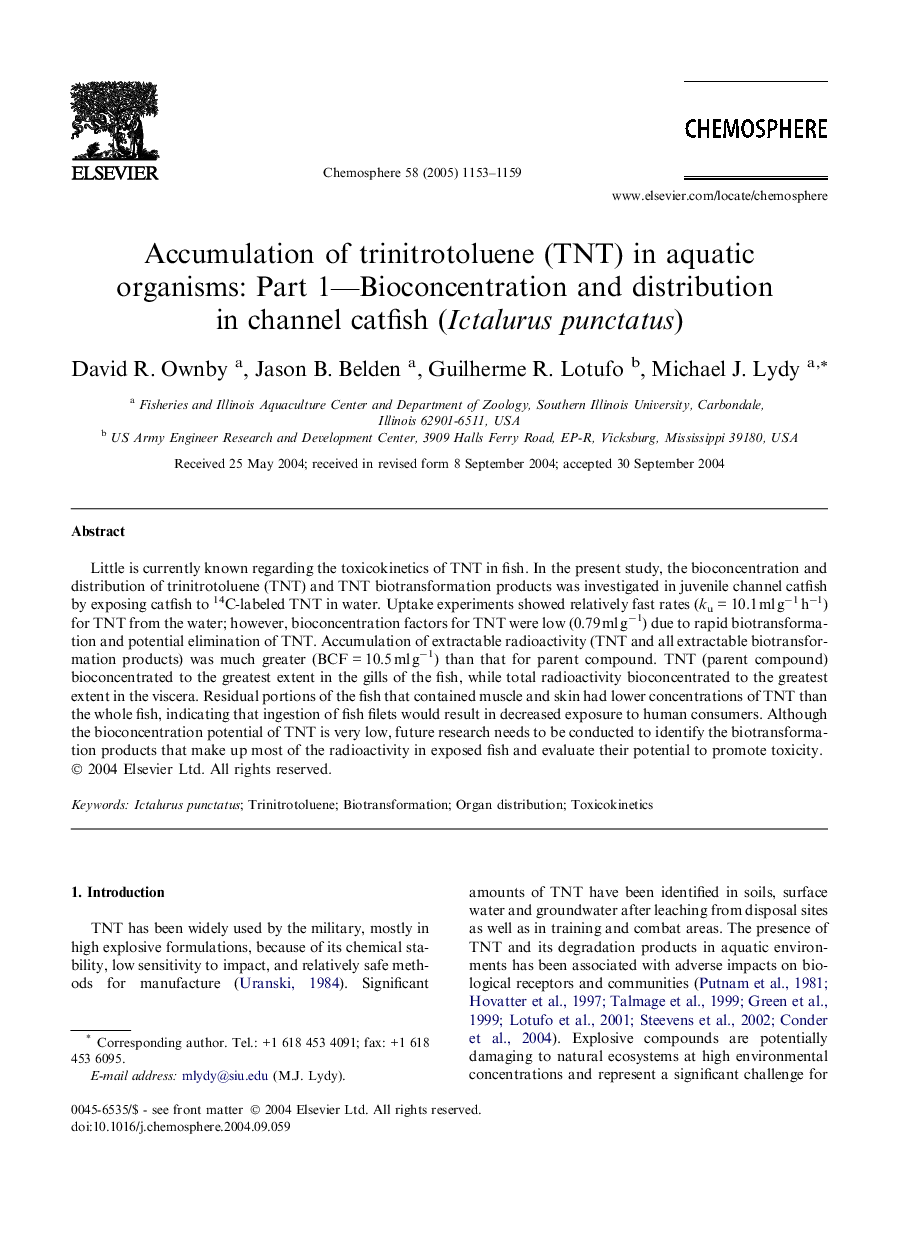| Article ID | Journal | Published Year | Pages | File Type |
|---|---|---|---|---|
| 9451662 | Chemosphere | 2005 | 7 Pages |
Abstract
Little is currently known regarding the toxicokinetics of TNT in fish. In the present study, the bioconcentration and distribution of trinitrotoluene (TNT) and TNT biotransformation products was investigated in juvenile channel catfish by exposing catfish to 14C-labeled TNT in water. Uptake experiments showed relatively fast rates (ku = 10.1 ml gâ1 hâ1) for TNT from the water; however, bioconcentration factors for TNT were low (0.79 ml gâ1) due to rapid biotransformation and potential elimination of TNT. Accumulation of extractable radioactivity (TNT and all extractable biotransformation products) was much greater (BCF = 10.5 ml gâ1) than that for parent compound. TNT (parent compound) bioconcentrated to the greatest extent in the gills of the fish, while total radioactivity bioconcentrated to the greatest extent in the viscera. Residual portions of the fish that contained muscle and skin had lower concentrations of TNT than the whole fish, indicating that ingestion of fish filets would result in decreased exposure to human consumers. Although the bioconcentration potential of TNT is very low, future research needs to be conducted to identify the biotransformation products that make up most of the radioactivity in exposed fish and evaluate their potential to promote toxicity.
Related Topics
Life Sciences
Environmental Science
Environmental Chemistry
Authors
David R. Ownby, Jason B. Belden, Guilherme R. Lotufo, Michael J. Lydy,
